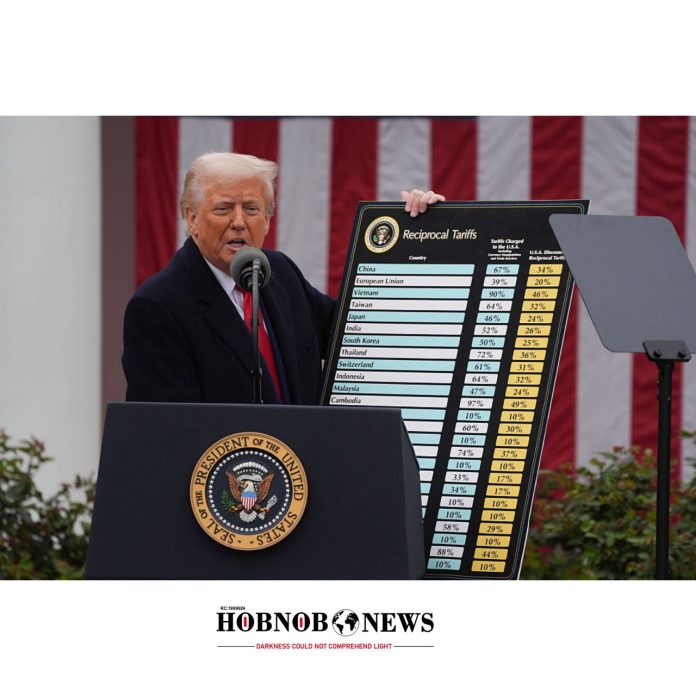On Thursday, the S&P 500 Index lost an astonishing $2.5 trillion, as fears mounted that President Donald Trump’s new tariffs could tip the economy into a recession. The hardest-hit companies were those with supply chains most dependent on overseas manufacturing. Apple Inc., which produces the bulk of its US-sold devices in China, saw its stock plummet by 9.3%. Other companies like Lululemon Athletica Inc. and Nike Inc., which have ties to manufacturing in Vietnam, also experienced losses exceeding 9%. Retail giants Target Corp. and Dollar Tree Inc., whose stores are filled with imports, both dropped more than 10%.
The damage was widespread, with very few US stocks avoiding the fallout. The S&P 500 endured its sharpest drop since June 2020, with more than 80% of companies in the index suffering losses. Over two-thirds of those dropped by at least 2%. “There’s really not anybody getting spared in absolute terms,” said Garrett Melson, a portfolio strategist at Natixis Investment Managers Solutions. “You’re just wrapped up, today at least, in a broad de-risking, and so it’s kind of just across the board taking chips off the table.”
The scope of the new tariffs was far more severe than those implemented during Trump’s first term, threatening to disrupt global supply chains, deepen the economic slowdown, and drive up inflation. Investors were left scrambling to predict the impact on corporate profits. Citigroup analysts, led by Atif Malik, estimated that Apple’s gross margin could take a 9% hit if the company absorbed the higher costs associated with the tariffs on Chinese goods.
This new wave of tariffs is on par with the largest tax hike since 1968, according to JPMorgan economist Michael Feroli. He estimated it could add up to 1.5% to prices this year, as measured by the Federal Reserve’s preferred inflation gauge, while putting a strain on personal incomes and consumer spending. “This impact alone could take the economy perilously close to slipping into recession,” Feroli wrote. “And this is before accounting for the additional hits to gross exports and to investment spending.”
US assets were the hardest hit in the aftermath of the tariff announcement. The S&P 500 lost 4.8%, while the dollar also weakened. The effects were less severe overseas: Asian stocks fell by less than 1%, the Stoxx Europe 600 index slid 2.6%, and the euro strengthened by about 1.6% against the dollar.
Semiconductor and industrial companies bore the brunt of the damage. The Philadelphia Semiconductor Index plummeted by 9.9%, with Micron Technology Inc. dropping 16% and Broadcom Inc. falling 11%. Companies like Caterpillar Inc. and Boeing Co., which rely heavily on sales to China, saw their stocks fall by at least 8%.
Among the Magnificent Seven stocks—Apple, Tesla, Microsoft, Nvidia, Alphabet, Amazon.com, and Meta Platforms—Apple led the way in losses, with around $300 billion in market value erased. This group, which has driven much of the US stock market’s growth in recent years, now faces increasing uncertainty.
“We see 5,300 as the near-term target for the S&P 500, but if tariff uncertainty persists or negotiations with trading partners don’t go well, risks of downside through 5,000 become real,” wrote Bhanu Baweja of UBS Group AG in a note to clients. “The probability of US stocks entering a bear market is going higher.”

